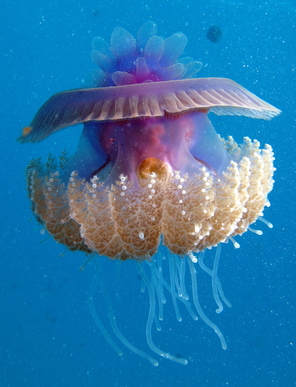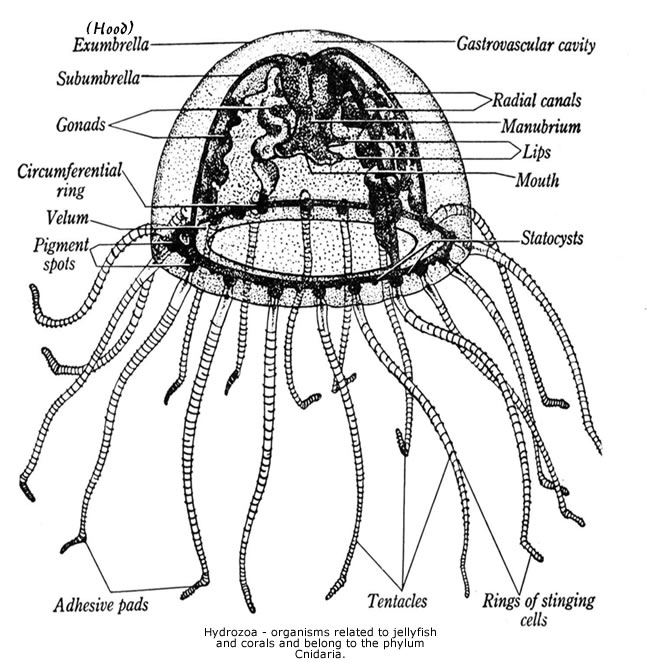The Cauliflower Jellyfish is found in the Indo-Pacific and East Atlantic. It occasionally drifts inshore but it is mostly found out in the ocean. It is a large jellyfish (about 50-60 centimeters in diameter). Multiple tentacles follow the jellyfish so that it can sting its prey from behind. The Cauliflower jellyfish is also targeted by the jellyfish fishing industry. It is eaten as a delicacy or for medicinal purposes in China and Japan. Sea turtles have preyed upon the Cauliflower Jellyfish in the past.
Jellyfish have no specific cardiovascular system. Oxygen is easily absorbed through their thin bodies. They use diffusion to circulate materials throughout their bodies. Almost every cell in their bodies is in direct contract with the nutrients it needs.
Jellyfish have no specific cardiovascular system. Oxygen is easily absorbed through their thin bodies. They use diffusion to circulate materials throughout their bodies. Almost every cell in their bodies is in direct contract with the nutrients it needs.


